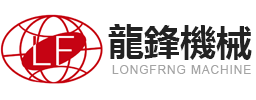
There are many processes for mirror axis machining, each with its own advantages and disadvantages. Today, combined with the processing technology of the roller shaft on the ball mill, the advantages and disadvantages of various processes are analyzed.
1 Cylindrical grinding machine
The cylindrical grinding machine is specially designed for machining shaft products, which is beneficial to improve the accuracy and ensure the roughness of the setting.
However, some of the workpieces have large tonnage and large volume, and can be used to process such large cylindrical grinding machines. There are no fixed products in China, and they need to be customized. Ordinary cylindrical grinding machines also need more than 5 million yuan. The cost does not include civil foundation, power supply, Matching costs such as venues. In the case that the current processing volume does not meet the utilization rate of the machine tool, the processing cost is very expensive, especially in the case that the number of products does not have a certain scale, and the processing technology seems to be more than enough.
2 grinding wheel grinding
Use the existing horizontal lathe to install a grinding wheel on the tool holder. At the same time, an emulsified coolant unit, machine tool rail protection and emulsion circulation recovery system were added. This method does not invest much and the processing meets the requirements, but it brings the emulsion splash loss, affects the environment, and the processing preparation time is longer due to the need to set up these facilities. In addition, since the longitudinal feed transmission ratio is small, the amount of feed is difficult to grasp, and it is easy to cause defects such as excessive grinding and burning.
3 abrasive belt grinding
With the existing horizontal lathe, the belt grinding machine is installed on the tool holder, and the machine rail protection measures are taken at the same time. The processing method is convenient to use, safe and reliable, and has high efficiency, but the axial occupation space is large, the belt replacement is frequent, and the processing precision is destroyed.
4 honing
It is used for finishing holes with high cylindricity and roughness requirements. Using the existing heavy-duty horizontal lathe, the outer honing head is mounted on the tool holder, the axis of the honing wheel forms a fixed angle with the workpiece axis, and the machine guide rail protection measures are taken. Under the push of the tool holder, the honing wheel is pressed against the surface of the workpiece to produce a determined contact, which is rotated by the rotation of the workpiece and relatively slidably rubbed, and is axially reciprocated by the turret to achieve surface grinding. The honing wheel itself does not need to increase the power separately, occupying less space, convenient to use, safe and reliable, high smoothness, and fewer replacement times of the honing wheel.
5 polishing wheel polishing
A polishing machine equipped with a polishing wheel is mounted on the lathe tool holder, and at the same time, protective measures are taken for the machine guide rail, and a barrier measure is provided on the bed side. While the workpiece is rotating, the outer edge of the polishing wheel is pressed at a high speed on the surface of the workpiece, and slowly moves back and forth along the guide rail parallel to the axial direction of the workpiece until the workpiece size and roughness are reached. The polishing rim is similar to the Chiba sand felt wheel. Compared with the belt grinding machine, the efficiency is similar, the polishing wheel is used for a long time, but the dust is large and the environment is poor.
6 rolling
Rolling process is to roll the high hardness and smooth roller into contact with the metal surface, flatten the convex part of the surface, and make the concave part bulge, causing local slight plastic deformation of the surface layer to improve the plasticity of the surface roughness. The type of processing method. It is characterized in that the surface roughness is improved while the surface roughness is improved in a short time, and the surface hardness is improved. After the workpiece is finished to 0.05~0.1mm on one side, the existing heavy-duty horizontal lathe is used to install the rolling head on the tool holder to apply the set pressure to the surface of the journal. The rolling head rotates under the rotation of the workpiece, crushes the surface of the workpiece, and slowly reciprocates along the guide rail parallel to the axial direction of the workpiece on the tool holder until the workpiece size and roughness requirements are reached. This method does not need to take protective measures for the machine guide rails, nor does it need to provide barrier measures on the bed side, which can not only improve the surface finish of the workpiece, but also increase the surface hardness of the workpiece by about HB20. The disadvantage is that the low processing efficiency has a great influence on the machine tool.
7 can mirror surface machining
The mirror axis machining mechanism is to apply high-frequency vibration to the surface of the metal workpiece to be processed, so that the surface metal of the workpiece is plastically deformed, and the surface finish is greatly improved. This improvement in surface quality is comprehensive, with both increased hardness and reduced surface roughness, while also bridging some microscopic cracks and improving the fatigue strength of the workpiece.
The actuator can touch the workpiece with a set pressure (this pressure is only about 1% of pure rolling), and the ultrasonic impact gold tool impacts the workpiece at a high frequency of 30,000 times per second. On the lathe, after the workpiece size is basically in place with a common tool, and then the energy can be replaced by the original ordinary tool, the surface finish of the workpiece can be improved by 3 or more (the roughness Ra value can easily reach 0.2 or less). Moreover, the surface microhardness of the workpiece is increased by more than 20%, and the surface wear resistance and corrosion resistance of the workpiece can be greatly improved.
8 Comprehensive comparison of several processing methods
Taking the outer cylindrical finishing of the G160-140 roller press as an example, we compare the processing of the above several processing methods. See Table 1 for comparison of process and process parameters, Table 2 for comparison of processing effects, and Table 3 for comparison of energy consumption and auxiliary materials consumption. See Table 4 for comparison of operating environment and safety.
9 Conclusion
When selecting the processing methods for key parts and key processes, it is necessary to consider not only the processing quality requirements, but also the safety, environmental protection, processing equipment purchase costs, supporting costs, processing and use costs (including consumables, energy consumption, labor, and use of the site). (etc.), processing efficiency, quality stability and other aspects of comprehensive consideration.








